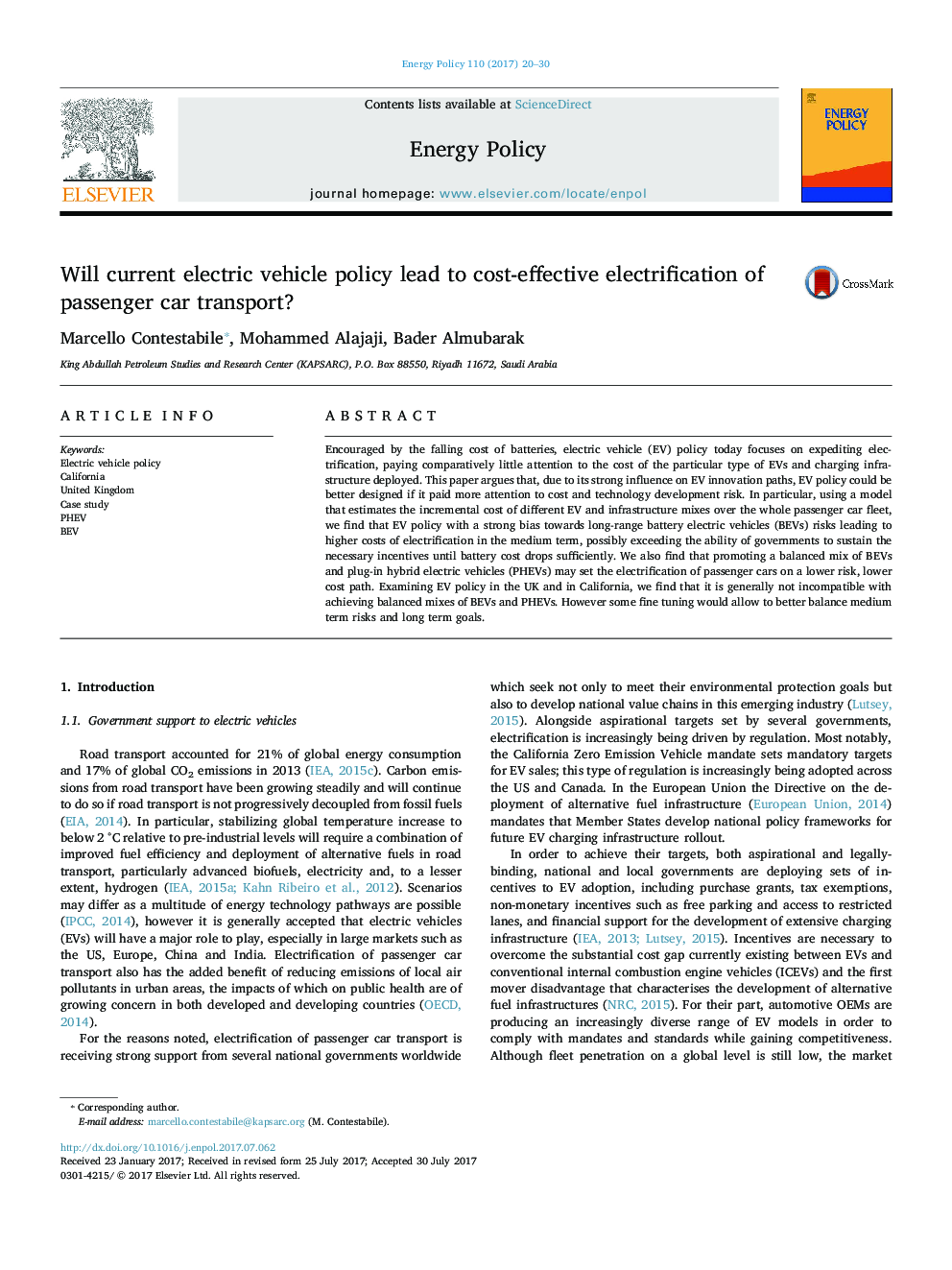| Article ID | Journal | Published Year | Pages | File Type |
|---|---|---|---|---|
| 5105589 | Energy Policy | 2017 | 11 Pages |
Abstract
Encouraged by the falling cost of batteries, electric vehicle (EV) policy today focuses on expediting electrification, paying comparatively little attention to the cost of the particular type of EVs and charging infrastructure deployed. This paper argues that, due to its strong influence on EV innovation paths, EV policy could be better designed if it paid more attention to cost and technology development risk. In particular, using a model that estimates the incremental cost of different EV and infrastructure mixes over the whole passenger car fleet, we find that EV policy with a strong bias towards long-range battery electric vehicles (BEVs) risks leading to higher costs of electrification in the medium term, possibly exceeding the ability of governments to sustain the necessary incentives until battery cost drops sufficiently. We also find that promoting a balanced mix of BEVs and plug-in hybrid electric vehicles (PHEVs) may set the electrification of passenger cars on a lower risk, lower cost path. Examining EV policy in the UK and in California, we find that it is generally not incompatible with achieving balanced mixes of BEVs and PHEVs. However some fine tuning would allow to better balance medium term risks and long term goals.
Related Topics
Physical Sciences and Engineering
Energy
Energy Engineering and Power Technology
Authors
Marcello Contestabile, Mohammed Alajaji, Bader Almubarak,
